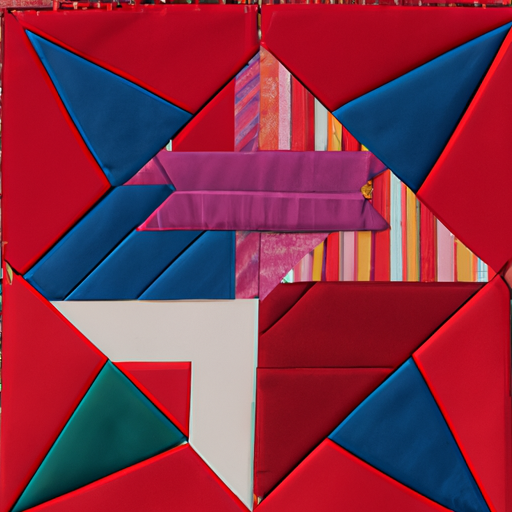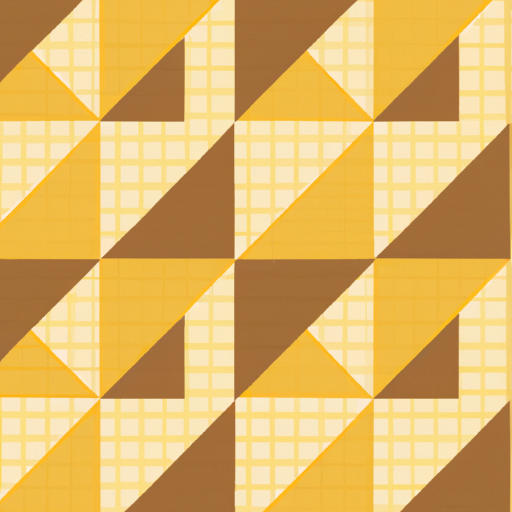
Can you quilt wavy lines with a walking foot?
As the needle pierces the fabric and the hum of the sewing machine fills the room, I can’t help but think of my grandmother’s old quilt. Its delicate stitches told the story of her life, of the moments she cherished and the hardships she overcame. And now, as I sit before my own quilting project, I wonder – can I replicate that same beauty and story with a walking foot and wavy lines? It may seem like a small task in the grand scheme of things, but for those of us who cherish the art of quilting, every stitch counts. So, let’s delve into the world of quilting with a walking foot and explore the possibility of crafting wavy lines that will leave a lasting impression.
1. The Quilting Conundrum: Can You Achieve Wavy Lines with a Walking Foot?
As a quilter, there’s nothing more frustrating than spending hours piecing together your masterpiece, only to struggle with wavy lines when it comes to quilting. It’s a conundrum that many of us face, as we try to achieve those straight, crisp lines that we’ve seen in the most beautiful quilts. But can you achieve these lines with a walking foot?
The answer is yes – but it’s not always easy. Walking feet are designed to help you feed your fabric evenly through your machine, but they’re not a magic solution for wavy lines. However, with a little patience and practice, you can achieve those straight lines that you’re looking for.
One technique that can help you achieve straighter lines is to use tape as a guide. Simply place a strip of tape on your quilt, parallel to the lines you want to sew. You can then use this as a visual guide for your machine, ensuring that your lines are straight and even.
Another technique that can be helpful is to slow down your stitching speed. Walking feet can move quickly, which can make it difficult to achieve accuracy. By slowing down, you can take your time to ensure that your lines are straight and even.
Ultimately, achieving straight lines with a walking foot comes down to practice and technique. But with a little patience and determination, you can overcome the quilting conundrum and create the beautiful, straight-lined quilts of your dreams.
2. Breaking Free from the Quilting Norms: Embrace the Challenge of Wavy-Line Quilting
Are you tired of the same old traditional quilting patterns? Do you want to break free from the norms and try something new? If so, then wavy-line quilting might be just the challenge you need!
Embracing the wavy-line quilting technique can be a bit daunting at first. But trust me, it’s worth it. This technique allows you to add a touch of personality and creativity to your quilts. It gives your quilt a unique look that’s different from the standard straight-line quilting patterns.
The wavy-line quilting technique is not only visually stunning, but it’s also fun to do. The process involves using a free-motion quilting foot to stitch up and down in a fluid, wave-like pattern. You can let your imagination run wild by creating your own unique waves or following a pattern to get started.
Not only does wavy-line quilting look beautiful, but it also adds texture to your quilt. The movement of the waves creates a sense of movement on the surface of the quilt fabric. It also provides a tactile experience for those who touch the quilt, making it all the more special.
So, are you ready to embrace the challenge of wavy-line quilting? Don’t be afraid to try something new and break away from traditional quilting patterns. You never know, this technique might just become your new favorite way to quilt.
3. The Power of the Walking Foot: An Exploration of the Versatility of Quilting Techniques
The use of walking foot in quilting is often underrated, yet it offers a myriad of possibilities. With the ability to move the top layer and the batting layer in tandem, the walking foot method eliminates bulges, puckering and tautness that compromise the quilt’s integrity. For beginners, it’s a great tool to practice straight line quilting while experienced quilters can explore its versatility in other quilting designs.
When it comes to quilting techniques, the power of the walking foot cannot be overlooked. One of the most popular designs is the use of gentle curves. By following pre-drawn lines, you can create undulating curves for a softer, more relaxed feel of your quilt. It’s easy to achieve this look by using the adjustable guide on your walking foot and a washable fabric pen. The result is an elegant and modern look that elevates your quilt and adds dimensionality.
If you’re looking to add texture and depth to your quilt, then the walking foot is your friend. For instance, straight-line quilting using the walking foot in a grid pattern provides not only texture but also a dramatic impact, emphasizing the quilt’s design. The key is playing with the stitch length and spacing to produce your preferred look. Combining that with a vibrant thread colour also creates an exquisite quilt with a unique personality.
Finally, another thing to keep in mind when it comes to the walking foot’s versatility is the ability to sew through numerous layers of fabric smoothly. This feature is perfect for quilting thicker fabrics or large quilt projects. Examples of this include the ability to sew through several layers of denim or to quilt using thick batting for a warm and cozy quilt. Now, imagine all the design possibilities with the walking foot method!
In conclusion, the walking foot is an exceptional addition to your quilting arsenal that should not be ignored. Not only does it provide an excellent solution to quilting issues, but it also offers immense versatility for you to expand your quilting techniques. So, don’t shy away from exploring the versatility of quilting techniques with the walking foot method, and see what extraordinary creations you can achieve.
4. From Ordinary to Extraordinary: How to Create Dynamic Designs with Wavy-Line Quilting
Wavy-line quilting is the perfect way to take your ordinary quilt design to the next level. The dynamic movement created by the wavy lines adds depth and interest to the quilt, making it truly extraordinary. Here are a few tips to help you create dynamic designs with wavy-line quilting:
1. Experiment with different wavy-line designs: Don’t be afraid to try out different styles of wavy-line quilting. Some popular designs include echo quilting, serpentine lines, and gentle waves. Try out different designs until you find the one that best suits your quilt.
2. Vary the spacing of your wavy lines: By alternating the spacing of your wavy lines, you can create a more interesting design. Start with wider spacing in areas where you want the quilt to be more open, and closer together in areas where you want more texture.
3. Use contrasting thread: Bold, contrasting thread can make your wavy-line quilting pop. Choose a thread color that complements your fabric and enhances the overall design of your quilt.
4. Incorporate different quilt motifs: You can use wavy-line quilting to create a variety of different motifs, such as leaves, flowers, or feathers. By blending these motifs with your wavy-line quilting, you can create a truly stunning quilt design.
With these tips in mind, you can take your quilting from ordinary to extraordinary. So why not give wavy-line quilting a try today? It’s a fun and creative way to add dimension and interest to your quilts, and the end result is sure to be truly breathtaking.
5. Quilting with a Purpose: Unlocking Your Creativity and Letting Your Inner Artist Shine
Quilting is an artistic expression of love and passion. In this process, we sew pieces of fabric together. We enjoy diving into different designs and color combinations, crafting unique pieces that reflect our inner soul. The act of quilting is an art form that allows us to express our creativity. It enables us to translate our imagination into a tangible work of art.
Quilting is more than a hobby or activity; it’s a way to honor our ancestors, commemorate special events, or even cope with life’s hardships. With each stitch, we weave memories and emotions that will be cherished for years to come. Quilting can increase our mindfulness and help us cope with stress. By creating something, we exert our control over our environment. When we quilt, we are giving ourselves permission to focus on something positive and meaningful.
Quilting is not only about the final product. It’s about the process of creating something we love. It’s about unlocking our creativity and letting that inner artist shine. Every piece of fabric, every color, and every stitch is like a brushstroke on a canvas. It all comes together to form a beautiful masterpiece that tells our story.
When we share our quilts with others, we are sharing a part of ourselves, our passions, and our love. Quilting is a way to connect with others, to express our emotions, to tell a story, and to spread joy. So, the next time you quilt, remember that you are creating something special, something meaningful, something that will last for generations to come.
6. The Art of Imperfection: Why Quilting with Wavy Lines is More Than Just Dropping the Feed Dogs
Quilting has long been seen as a craft of perfection, with straight lines and perfect angles being the goal in every project. But what if we embraced imperfection? What if we allowed our quilting to be a little wavy, a little wonky, and a little less than perfect? This is where quilting with wavy lines comes in.
Contrary to what some may think, quilting with wavy lines is more than just dropping the feed dogs on your machine and randomly moving the fabric around. It’s a deliberate technique that allows for a more organic and free-flowing feel to a quilt. By intentionally quilting with wavy lines, we can create a sense of movement and texture that straight lines just can’t match.
Not only does quilting with wavy lines add visual interest to a quilt, but it also creates a tactile experience. Running your hand over a quilt with wavy quilting adds a dimension of touch that straight lines simply can’t emulate. It’s like running your hand over a bumpy road versus a smooth one. Both have their merits, but the bumpy road adds an element of excitement and unpredictability.
So, the next time you’re working on a quilt and find yourself getting frustrated with trying to get those lines perfectly straight, remember that imperfection can be just as beautiful. Dare to quilt with wavy lines and see where it takes you. Embrace the art of imperfection and allow yourself to create something truly unique and stunning. As I finish up this article, I can’t help but feel a mix of emotions. Quilting has been a lifelong passion of mine, and the thought of potentially revolutionizing the way we approach wavy line quilting with a walking foot is both exciting and overwhelming.
But at the same time, I’m reminded of the countless hours spent struggling to achieve the perfect stitch, only to end up with wonky lines and uneven edges. It’s a feeling that every quilter can attest to – the frustration of not being able to bring your vision to life.
But now, armed with this newfound knowledge, I can’t wait to dive back into my work with a renewed sense of creativity and possibility. The beauty of quilting is in the imperfections – every stitch tells a story, every pattern a unique reflection of its creator.
So, can you quilt wavy lines with a walking foot? Absolutely. And in doing so, you’re not only pushing the boundaries of quilting techniques, but also unlocking a world of possibilities for your art. So go ahead – let your creative spirit soar and see where these wavy lines take you.